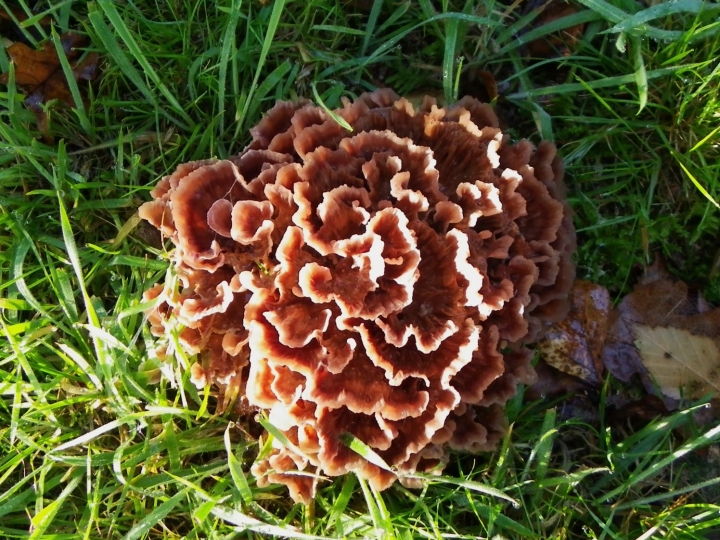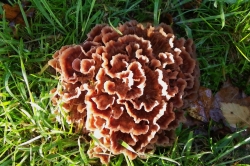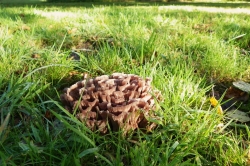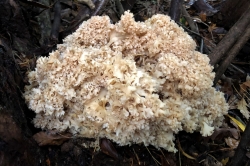Your basket is currently empty!
Home / Mushroom Guide /
Zoned Rosette
Zoned Rosette
A large, beautiful, red to reddish-brown coloured large rosette on the forest floor, around old Oaks and Beech trees.
| Mushroom Type | |
| Common Names | Zoned Rosette, Rhoséd Cylchog (CY), Rózsagomba (HU) |
| Scientific Name | Podoscypha multizonata |
| Synonyms | Phylacteria intybacea var. multizonata, Stereum multizonatum, Thelephora multizonata |
| Season Start | Jul |
| Season End | Nov |
| Average Mushroom height (CM) | |
| Average Cap width (CM) |
Fruiting Body
Fruit body is 5–40 cm wide, irregular, rosette-like, which is made of numerous red-reddish, zonated lobes. These lobes are attached to a central base.
Upper (sterile) surface is reddish with some darker, reddish-brown concentrical zones.
Under (fertile) surface is light pinkish grey, smooth, and either slightly wrinkled, or slightly folded.
Stem
Deeply rooting as the fruit body is attached the roots of the trees.
Flesh
Flesh is white, thin, rubbery, and tough when moist (more brittle when dry).
Habitat
It grows mostly solitarily on the roots of mostly old Oaks (Quercus), much rarer Beech (Fagus) in parks and deciduous forests, where there are rather big distance between mature trees. The nature of this association is still unclear. Some claim it might be a parasitic relationship, some claim the species is saprotrophic, but more studies are needed to confirm which one is correct.
Possible Confusion
Blushing Rosette (Abortiporus biennis) has poroid underneath, Wood Cauliflower (Sparassis crispa), pictured, and Sparassis spathulata has much paler coloured lobes, and they both grow under conifers.
Taste / Smell
Inedible. Taste and smell indistinctive.
Frequency
It is occasional in England and rare in Scotland. We aren’t aware of its presence in Wales, Northern Ireland and/or in the Republic of Ireland, but it doesn’t mean this beautiful species cannot be found there.
Spores
Spore print is white. Spores sub-cylindrical, smooth, colourless (hyaline), and amyloid (which proves the spore wall does contain starch in traces).
Other Facts
The epithet (2nd part of the scientific name) refers to the multi-zoned lobes of the fruit bodies.




























Leave a Reply